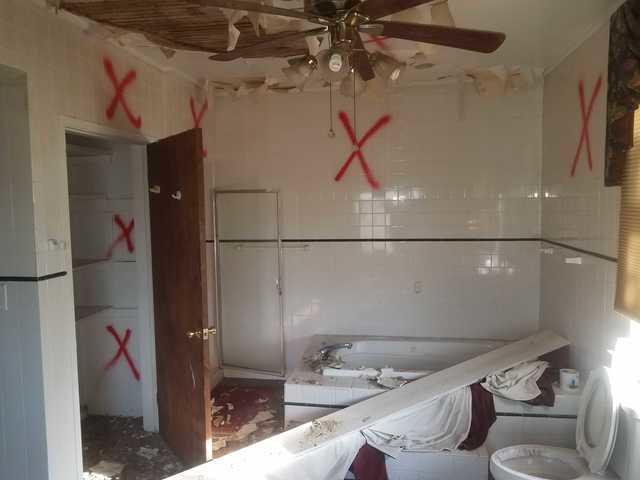
Marked Area for Sheetrock Removal.
Here, given the poor condition of the materials, the only solution was to remove those sections of wall and ceiling that were completely damaged. In these situations, it is critical to carefully remove the materials so the mold spores are not dislodged and reattach elsewhere. Unlike asbestos, which is a dead mineral, mold is a living, breathing fungus that multiplies and will continue to spread if the conditions are conducive to mold growth.
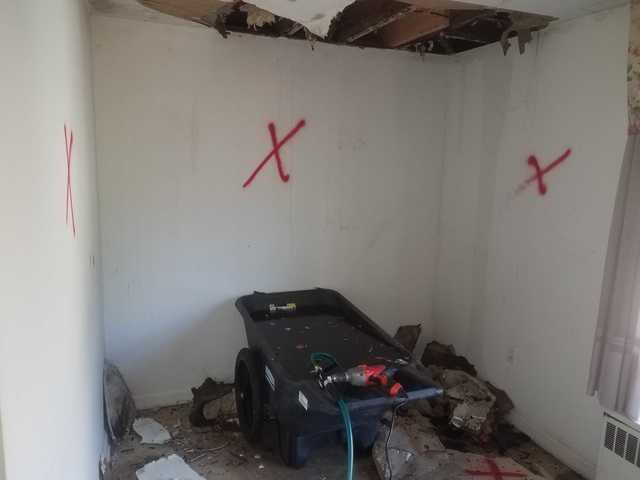
Marked Additional Area for Removal
Here we had to remove the sheetrock.
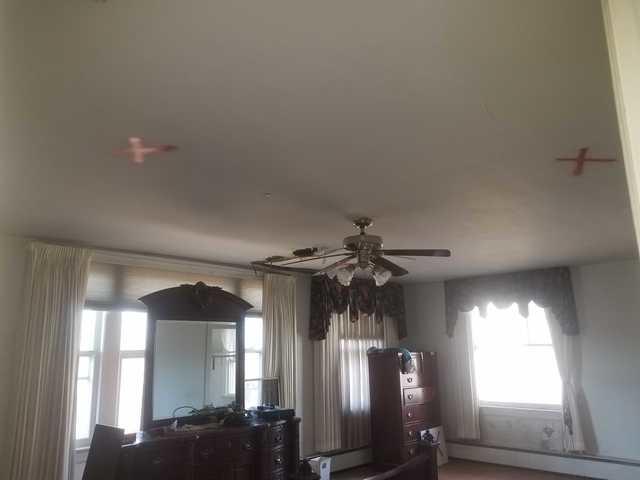
More Marks
This was an extensive job.
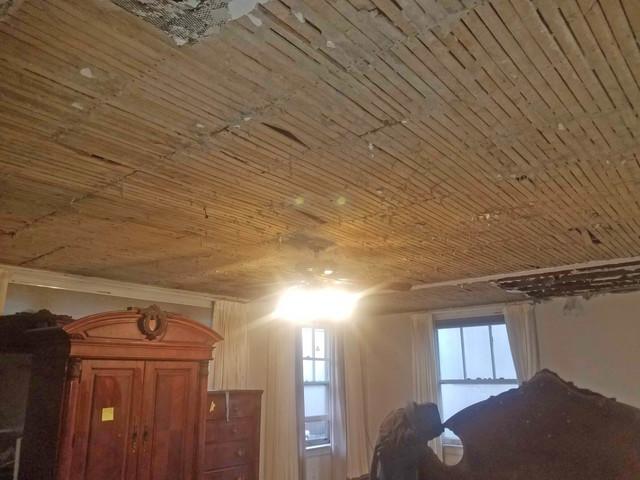
Ceiling under sheetrock
We had to remove all the sheetrock on the ceiling.
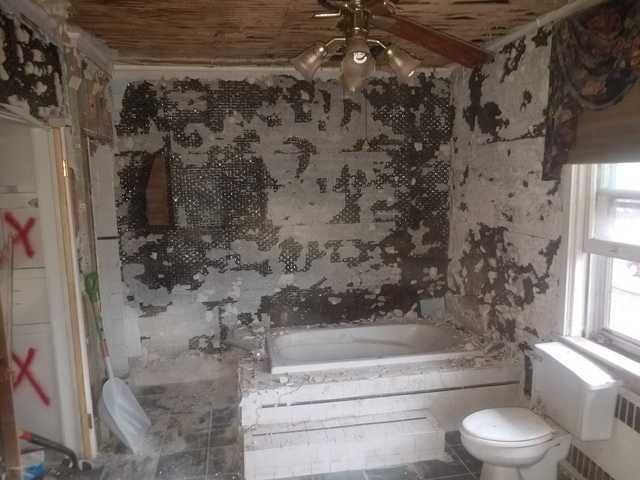
Now for Treatment
Once we remove all of the water-damaged materials, we will treat all of the mold-affected surfaces with two different applications. First, we applied an antimicrobial application called MAPS 1, which is an EPA registered product that attacks mold on a cellular level and immediately kills it.
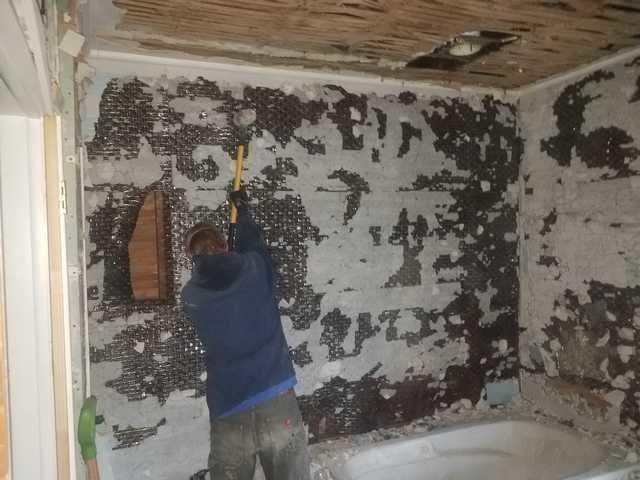
Next Part of the Treatment
Next, we used our mold stain remover and scrubbed away all the mold growth throughout the area. Afterward, we applied our patented sealant called MAPS 2.
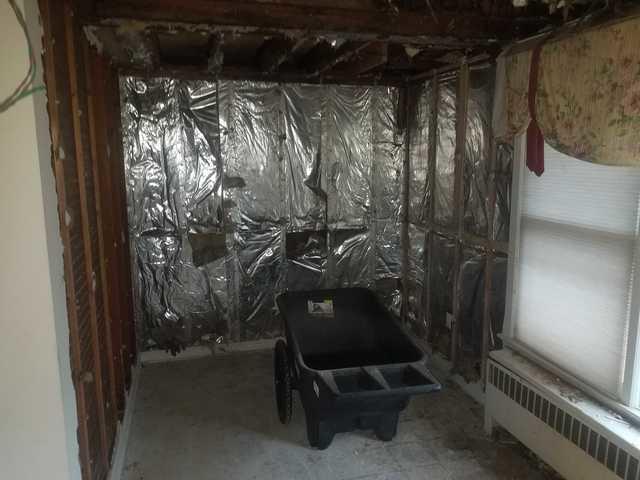
Prevents Future Mold Growth
MAPS 2 is a moisture-sensitive application that encapsulates the surface mold is growing on and renders it harmless, inert, and non-allergenic. One of the best features of MAPS 2 is that it will reactivate whenever it gets wet to prevent future mold growth.



